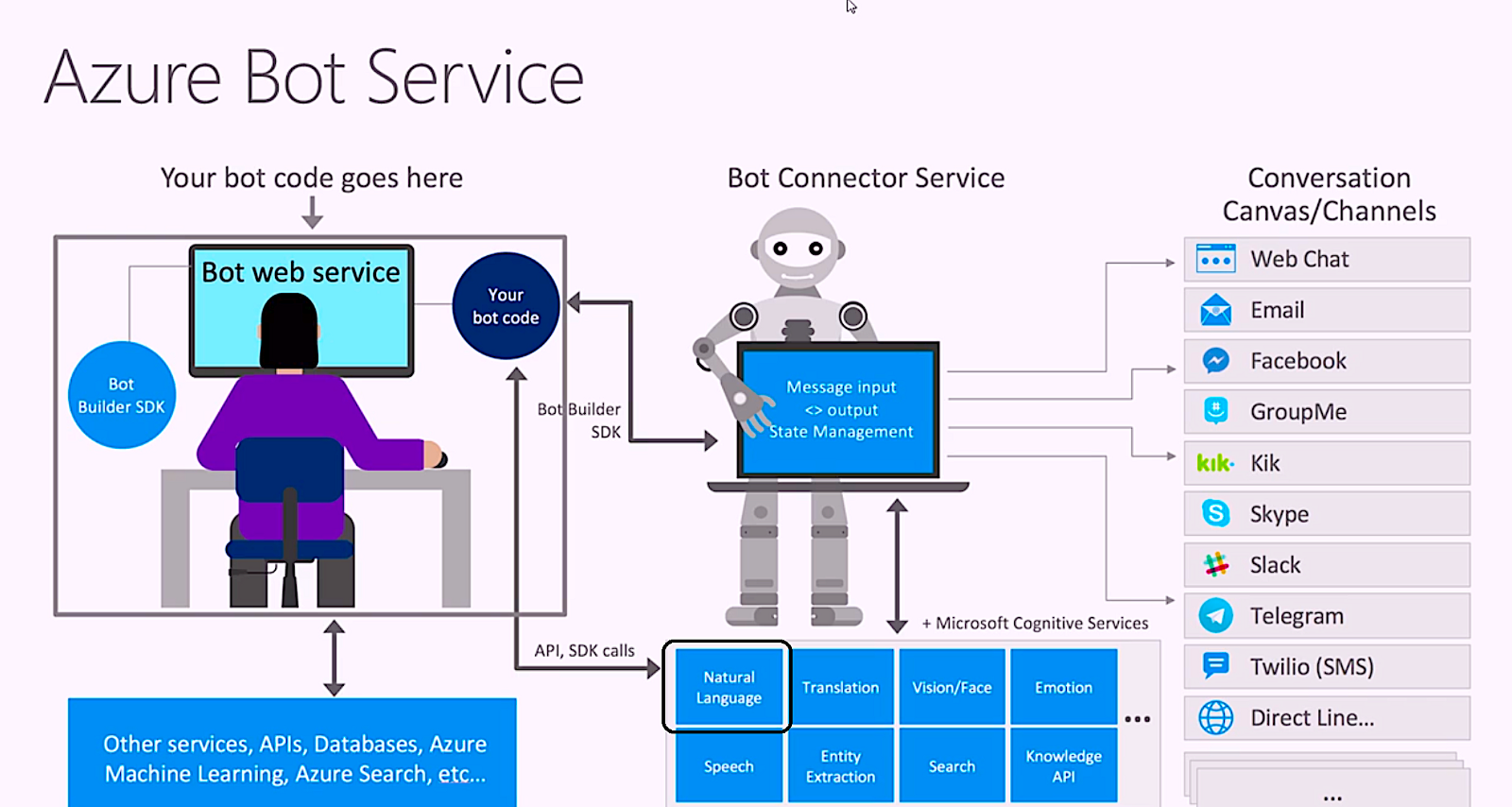

Doing this involves using various values from JSON settings from the relevant and existing services that you want to import.
#Azure chatbot full#
To import and reuse existing Azure resources for use with your chatbot, you'll need full access to all resources. Let's look at how you can import existing resources in Bot Framework Composer. This is just a personal preference, and introducing another option you have in terms of publishing your chatbot. I personally tend to create the LUIS resource directly by visiting the site luis.ai and manually configuring the required settings. These are optional resources, and the decision to automate the creation of these depends entirely on your use case. Each of these form the minimal set of core resources needed to get your chatbots running in Azure.īot Framework Composer can also automatically provision Azure Cosmos DB storage, application insights for error logging, or the NLP service LUIS. After supplying the details we've just looked at, Bot Framework Composer will generate a Microsoft application registration, an app service to host the bot, and a bot channel registration. In the past, I've had permission and authentication issues when hosting the chatbot in LUIS in different regions, so I normally use the same region for both. After specifying the operating system, you tell Composer the name you'd like to assign to your resource.įinally, you can also specify the region for the a natural language processing capability LUIS. You can choose to deploy to an existing resource group or to create a new resource group. You also need to specify a resource group for your chatbot's resources. The final step involves selecting the Azure subscription. You do this by selecting the create new resources option. Moving on to the next part of the published profile process, is where you tell Composer that you want to automatically provision resources. At the time of this course, Composer only supports a publishing target of Azure. You supply a profile name and set the publishing target. The main steps involved to help get your chatbot's resources automatically provisioned in Azure from Bot Framework Composer includes creating a published profile for the chatbot, ensuring you're signed into your Azure account from Bot Framework Composer, specifying the Azure subscription and name for the new resources.Ĭreating the published profile is straightforward. Let's look at how Composer can save you time by automatically provisioning all required chatbot's resources in Azure.

We'll take a closer look at each of these now. You can choose to import existing Azure resources, or you can hand off control to your Azure administrator to manually set up resources. You can get Composer to automatically provision the required Azure resources for your chatbots. There are three main ways you can publish a chatbot. And finally, we'll see a demo of publishing a chatbot to Azure, and how you can quickly test this.
#Azure chatbot how to#
You'll also learn how to manually configure chatbot resources by using the handoff to admin feature in Composer. We'll see how you can import existing Azure resources for your chatbot. We'll look at how you can use Composer to automatically create Azure resources for your chatbot. In this lecture, we will learn about the available options you have for deploying chatbots. Let's look at the available options you can use to deploy your chatbot using Bot Framework Composer.
#Azure chatbot software#
This course is intended for developers or software architects who want to learn more about Bot Framework Composer and how it can be used to create conversational AI solutions in Microsoft Azure. Implement logging for a bot conversation.Use Bot Framework Composer to create chatbots.Finally, we'll show you how to get your chatbot published on Azure and how to test your chatbot using the Azure Portal. Then we'll explore how the Bot Framework Emulator, Webchat Window, Watch Window, and Application Insights can be used to debug your chatbot. We'll cover how to work with state and variables before moving on to h ow to control chatbot output by using language generation and how to implement adaptive cards to create rich user experiences. You’ll learn about dialogs, triggers, and prompts and how these can be used to model conversational logic in your chatbots. This course shows you the fundamentals of how to create, test, troubleshoot, and publish chatbots using the Microsoft Bot Framework Composer.


 0 kommentar(er)
0 kommentar(er)
